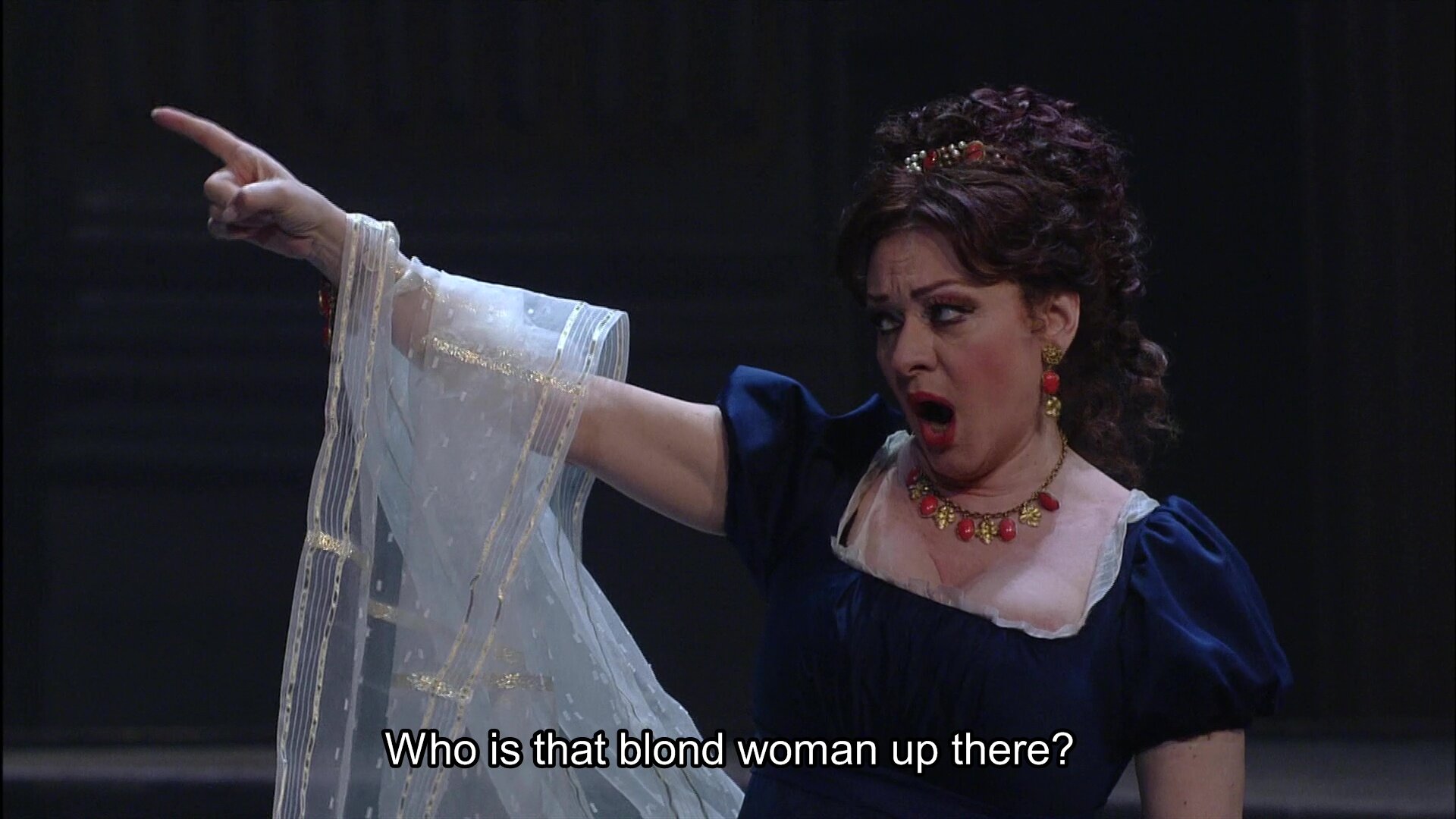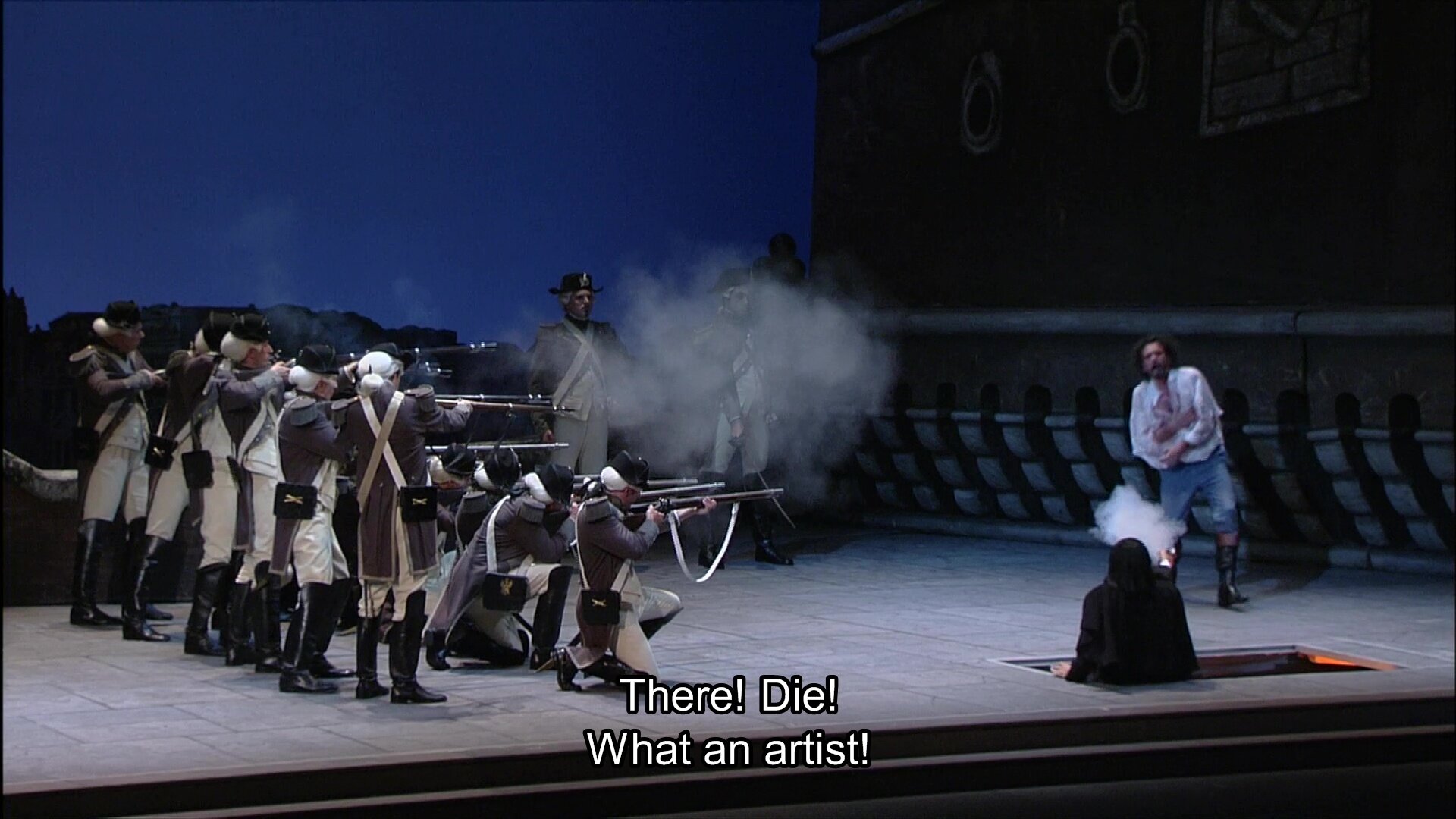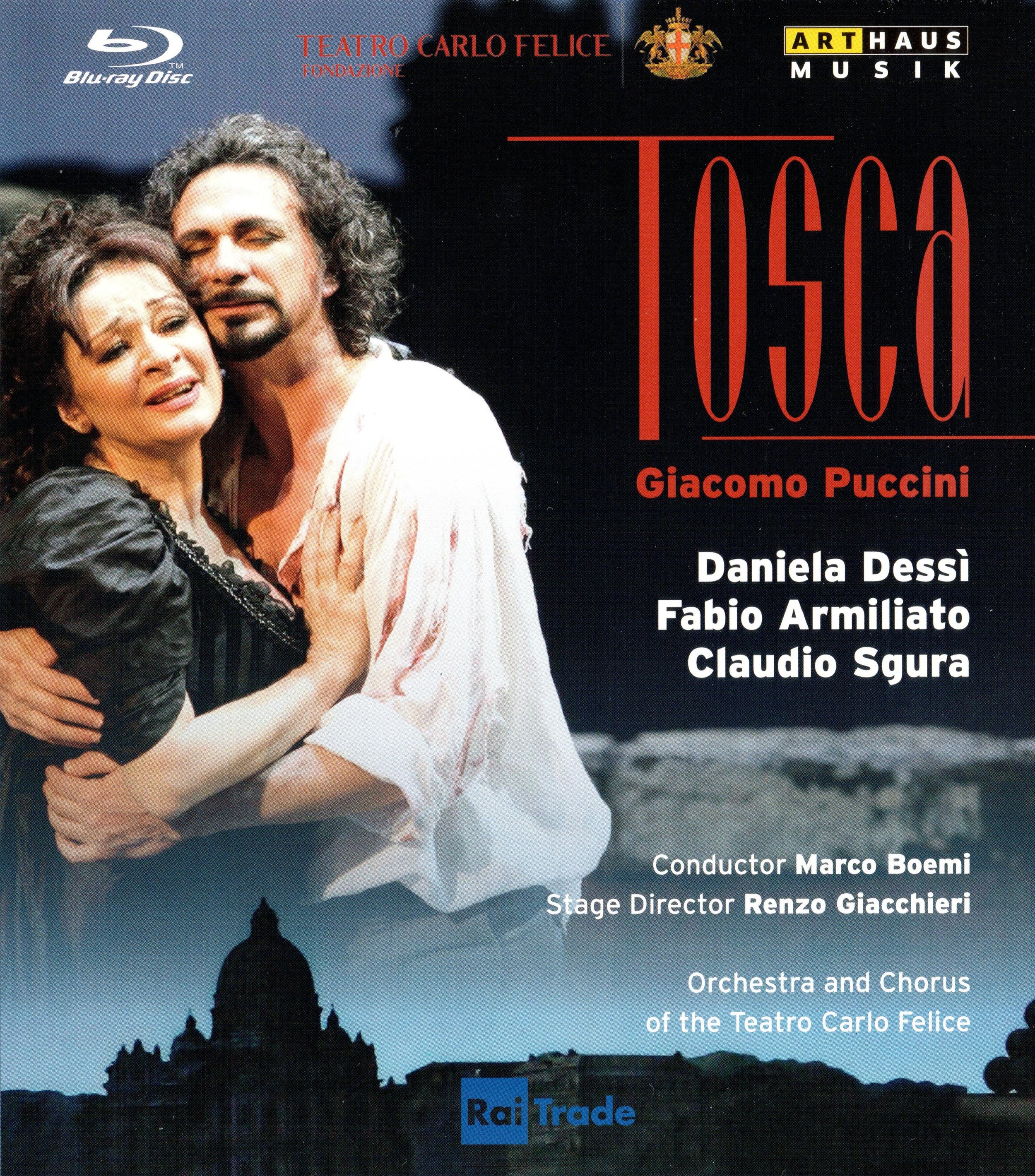
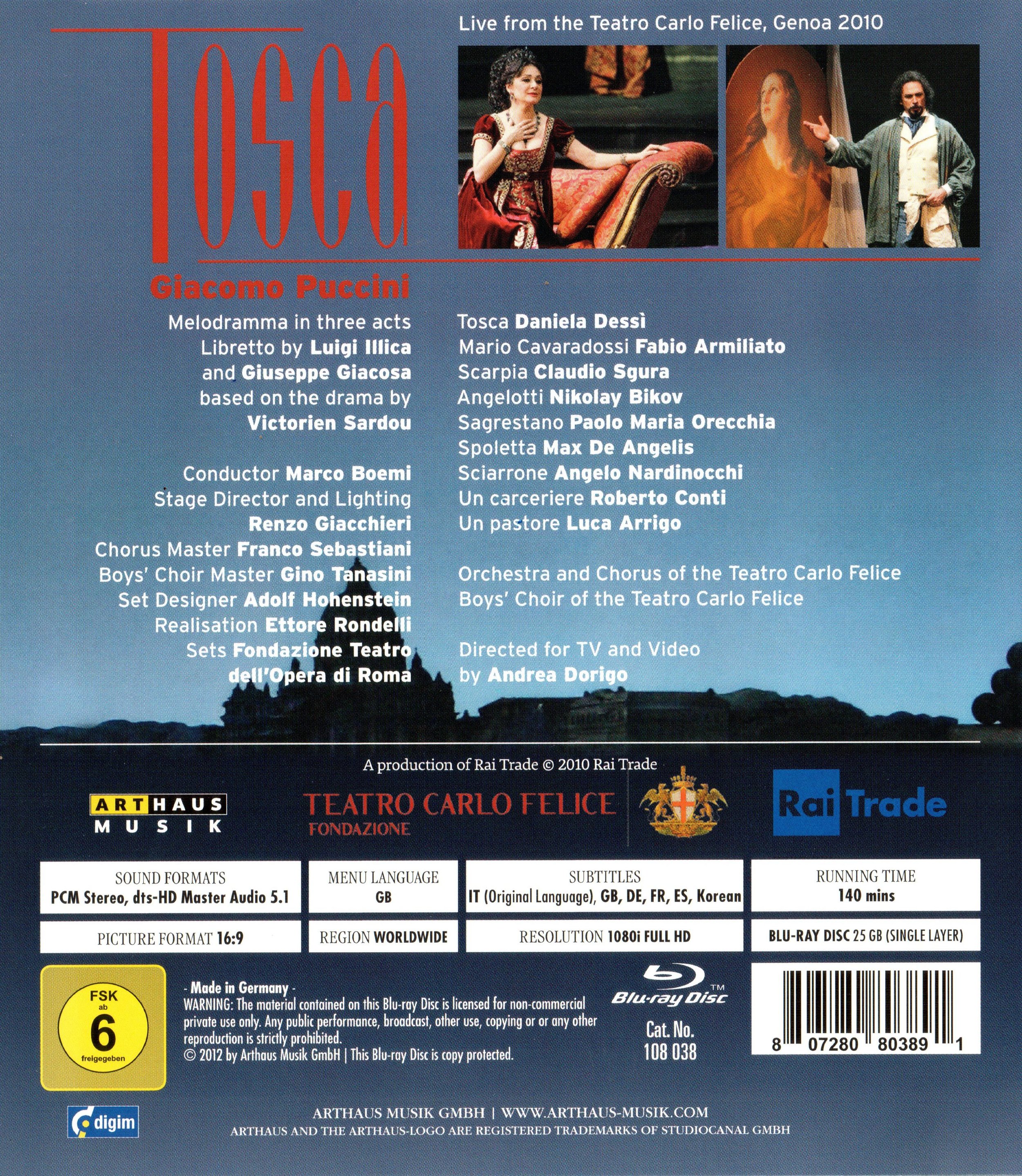
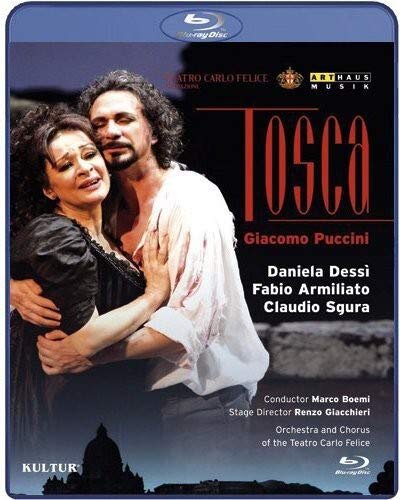
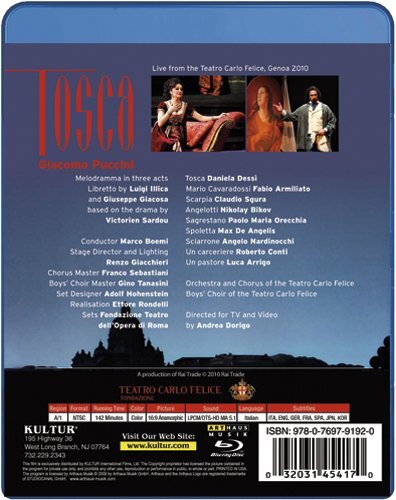
Puccini Tosca opera to libretto by Giuseppe Giacosa and Luigi Illica. Directed 2010 by Renzo Giacchieri at the Teatro Carlo Felice di Genoa in Italy. Stars Daniela Dessì (Tosca), Fabio Armiliato (Cavarodossi), Claudio Sgura (Scarpia), Nikolay Bikov (Angelotti), Paolo Maria Orecchia (Sacristan), Max De Angelis (Spoletta), Angelo Nardinocchi (Sciarrone), Roberto Conti (Jailer), and Luca Arrigo (Shepherd). Marco Boemi conducts the Orchestra, Chorus (Chorus Master Franco Sebastiani) and Boys' Chorus (Chorus Master Gino Tanasini) of the Teatro Carlos Felice. Set design by Adolf Hohenstein as recreated by Ettore Rondelli; also sets by the Fondazione Teatro dell'Opera di Roma; lighting design by Renzo Giacchieri. Directed for TV by Andrea Dorigo. Sung in Italian. Released 2012, disc has 5.1 dts-HD Master Audio sound. Grade: A
Special note: this story covers a version of this published by Arthaus and a different, but identical, version from Kultur.
Fabio Armiliato is excellent as Cavaradossi:
Highly-admired Daniela Dessi (and the wife of Armiliato in real life) is fine as Tosca except she's starting to age out a bit at 53. She may have also been ill as she died 6 years after this at age 59:
Claudio Sgura is a pretty and nasty Scarpia, except that he has two sets of eyebrows. His makeup doubtless looked great in the theater but was not done with high-definition cameras in mind. So Scarpia has (1) his real eyebrows, which we see clearly when the audience does not and (2) his swooping, wicked makeup eyebrows higher on his forehead. It's a tribute to Claudio Sgura that you soon get used to the scary brows and don’t notice any more the real ones:
The traditional set (following the original Hohenstein design) is comfy and satisfying even if you might notice air waves in the (hung fabric) castle walls when a player walks by. The costumes are pleasing without being ostentatious or expensive looking. The props are fine for the theater, even if they look slightly flimsy in HDVD close up. Everything has an ancient look about it which is appropriate since this is set during the Napoleonic wars. The Te Deum shown below is pretty impressive for the 2000-seat opera house in Genoa (population about 550,000).
Tosca is unusual in that each act is set in a specific building in Rome in the month of June, 1800. Scarpia is Chief of Police. He intends to compromise Tosca at his home Palazzo Farnese where security is lax compared the police station and prison at the Castel Sant’Angelo. And the servants have time off to attend a celebration. That explains (1) why there just happens to be a large steak knife on the dinner table (which you can see below next to the bowl of fruit) and (2) how Tosca can get out of the palace after she kills Scarpia:
Scapia’s apartment is well equipped with its own torture chamber:
Scarpia is a man of honor. He likes to say true things that are misleading. He’s not going to rape Tosca — he want to trick her into accepting his advances:
In the next screenshot below, Dessì has finished her famous aria Vissi d’arte:
There was an enthusiastic audience present throughout this performance. They knew this was being recorded and turned out to cheer on the home team. Almost every aria gets applause. After Vissi d’arte, the audience keeps clapping for more. Eventually, Dessì signals to the conductor that she will sing it again, and you see the conductor giving instructions to the orchestra where to start playing. All of this was doubtless contrived, but it was not phony. The audience loved being part of this show:
Dessì responds to her supporters with the van smile below. What you are seeing here is the warm, beating, bleeding heart of Italian opera:
Even the stage blood looks almost real:
Tosca decorates Scarpia’s cadaver:
Fabio sings his famous aria E lucenan le stelle, and he gets a repeat also:
Scarpia told Tosca that the firing squad would use blanks, which was true. He didn’t tell her that Spoletta would kill Cavaradossi with a pistol shot:
Conducted with zest by Marco Boemi, the orchestra music sounds clear, detailed, vivid, and gorgeous from the first to the last bar. The balance between the pit and the singers is perfect. Picture quality is fine with decent resolution and good color balance considering the low level of lighting throughout the production.
The show is presented as a recording of an opera performance, not as a opera recording which happened to be made at a live venue. The TV director gives us several important views of the whole theater and the pit during performance and nice whole stage shots. These shots tell us that we are in Genoa at the Teatro Carlo Felice. In addition, the TV director provides a wide range of mid-distance, short-distance, close up, and extreme close up shots. So we get the see the show better than the audience.
While watching this I began to get a feel for Italian opera is like. With one exception, everybody with a major credit appears to be Italian, and everything about the production seems to exude home-grown passion. I feel Italian passion too, especially during the repeat arias. Both singers perform their repeats differently from the first time and in both cases the repeats seem better than the first performance. I've never seen this before live or on the screen; when I see it now, I start feeling swept up.
I think Puccini would be happy with this performance if it was the last recording of Tosca ever made. Later I watched the EMI Tosca with Gheorghiu, Kaufmann, and Terfel at the Royal Opera House and Pappano conducting --- a colossal production with hot, world-famous musicians. On paper, the Royal Opera show figures to outshine the Italians at Carlo Felice. But the Italians hold their own with better acting and skillful personal directing that makes sense of every word in the libretto. Call it a case of big deal vs. real deal.
I title would get a B+ based on the usual factors. But Italian passion pushes the grade a notch to A.
Even though the Arthaus Musik publication of this title is region free, it may not always be available from vendors in Region A. Another release, probably aimed at Region A, has been published by Kultur with slightly different package artwork seen in the gallery above.
Sorry, there are many YT videos, but all are in SD and none do this title justice.
Shop around. First the Arthaus version:
OR
And next the Kutur issue:

